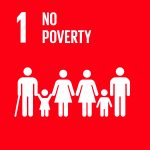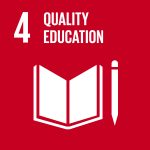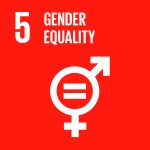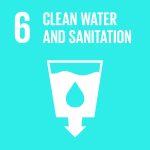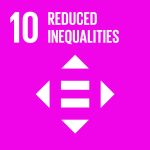The George Mason University Honey Bee Initiative
Description
Institution
Organizations/areas of the university involved
Led by School of Business and College of Science but in collaboration with the College of Education and Human Development, College of Humanities and Social Sciences, College of Visual and Performing Arts, College of Health and Human Services, Volgenau School of Engineering, President Ángel Cabrera, student groups.
Country
United States
Bees in the School of Business? Why Bees? What IS the Buzz About? The answer comes out of a growing commitment to creating shared value, of recognizing that business has a critical role to play in addressing the world’s most pressing challenges, often called sustainable development goals (SDGs). As Larry Fink, Founder, Chair and CEO of Blackrock described in an open letter “Society increasingly is turning to the private sector and asking that companies respond to broader societal challenges. . . . To prosper over time,” Fink says, “every company must not only deliver financial performance, but also show how it makes a positive contribution to society.” The School of Business recognizes the imperative to educate business leaders who embrace the responsibility to address sustainable development. The Honey Bee Initiative (HBI) exemplifies how we use sustainable beekeeping to empower communities locally and globally in an effort to address global goals focused on gender equality, food security, and economic empowerment. As such HBI epitomizes our commitment to sustainable development in action. Moreover, honey bees are threatened and bee health is critical to human survival. Bees pollinate one-third of the food we eat and are the “most important pollinator worldwide” (United Nations Environment Programme). But for reasons including colony collapse disorder, invasive mites (varroa destructor), and pesticides, honey bees are “disappearing at an alarming rate. Approximately 90 percent of the wild bee population in North America has died out” (Delk, 2013). The U.S. Pollinator Health Task Force aptly summarizes the business case for bees: “pollinators are critical to our Nation’s economy, food security, and environmental health. Honey bee pollination alone adds more than $15 billion in value to agricultural crops each year” (2015, p. ii). In 2013, George Mason University launched the Honey Bee Initiative with 16 hives to address this important national, economic, and food security issue. Today, with over 600 hives, domestic teaching and research programs in the Northern Virginia Region, thriving international programs in Colombia and Perú, and dynamic public-private partnerships, we aim to expand our focus on the SDGs framework and create measurable impact.
Results and impact measured or expected
We have used and are piloting qualitative and quantitative metrics such as: 1. Institutional Measures of Success (e.g., hive expansion, # students enrolled in courses, # visitors to apiaries, $ raised, # articles published, # community partnerships, amount of honey/wax/candles produced and sold); 2. Changing environmental habits/behaviors (e.g., decreased pesticide use, planting native plants, awareness of threats to bees); 3. Growth, health, and variety of pollinators (e.g., bee counts, pollen analyses); 4. Models that empower women and communities (e.g., program evaluation of Colombia women’s program focused on economic self-sufficiency, knowledge of business practices, self-confidence), and 5. Interviews and focus groups with HBI stakeholders. Our Colombia project has experienced significant growth, including an increase from 20 families to 160 families participating and from 3 municipalities to 9 participating municipalities, an increase in honey production and sales, a doubling of funds raised, and extensive coverage in more than 120 news stories.

Connection with the SDG framework
The Honey Bee Initiative focuses on the following SDGs: #1 No Poverty, #2 Zero Hunger, #3 Good Health and Well-Being, #4 Quality Education, #5 Gender Equality, #6 Clean Water and Sanitation, #8 Decent Work and Economic Growth, #10 Reduced Inequalities, #12 Responsible Consumption and Production, #13 Climate Action, #15 Life on Land, #16 Peace, Justice and Strong Institutions, and #17 Partnerships for the Goals. Every partnership, course, research project or funding appeal is tied directly to one or more of these goals. For example, our Colombia project works with stingless bees to enhance women’s empowerment in the community, provide an additional source of income, improve gender equity, and reduce poverty and hunger. A recent successful grant application for a 100,000 Strong in the Americas Grant was called Bees for Peace and focused on the role of sustainable beekeeping and gender equity as a means for building just and peaceful communities.
Barriers and follow up
First, as a multidisciplinary, university-wide collaboration, HBI has experienced challenges because it doesn’t fall neatly within disciplines or University “silos.” Getting widespread institutional buy-in for HBI is one effective approach to mitigate these concerns. Second, collaborating with non-profits, for-profits, the government, and communities, sometimes means difficulties in aligning visions and working through distinct financial, legal, and personnel systems. Establishing both written communication (e.g. memoranda of understanding) and regular in-person or phone exchanges in addition to being flexible has worked well. Third, there are financial growing pains with a program that crosses sectors and engages multiple constituencies. Telling HBI’s story of impact through social media, websites, news articles and videos is effective. Future plans include working with José Andrés and World Central Kitchen to replicate our Colombia project in Puerto Rico, creating a business model with the sale of mead, honey, and candles, and scaling current projects.

